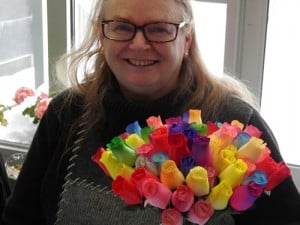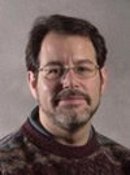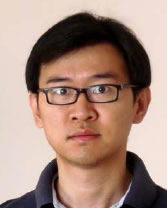Will Cantrell, coordinator for the Summer Undergraduate Research Fellowship (SURF) program, will conduct a workshop for students on writing effective SURF proposals at 6 p.m., Thursday, Jan. 16, in Fisher 131.
Faculty and staff are encouraged to notify students interested in applying for SURF funding to attend. For more information, see mtu.edu/surf.
The deadline for receipt of SURF applications is noon on Friday, Jan. 31, 2014.
From Tech Today
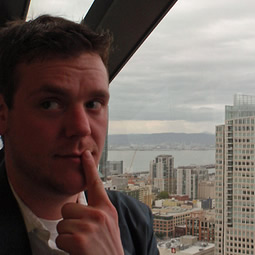 Matthew Davenport ’06 is a PhD physicist turned science writer. If you are interested in such a career, view some of Matt’s writing and visualization samples on his website.
Matthew Davenport ’06 is a PhD physicist turned science writer. If you are interested in such a career, view some of Matt’s writing and visualization samples on his website.
Matt also co-authored an article for Nature Nanotechnology in 2010. It is entitled “Graphene opens up to DNA,” published online 06 October 2010. doi:10.1038/nnano.2010.198 The work concerns the threading of pores in 2D graphene sheets by DNA strands.
While a student at Michigan Tech, Matt received the Ian W. Shepherd Award for most outstanding senior.
A paper by Professor Robert Nemiroff (Physics) and graduate student Teresa Wilson on their study designed to find time travelers on the Internet has garnered plenty of media attention. Hits include the following and many more:
From Tech Today.
See also:
In the News
Professor Robert Nemiroff’s (Physics) paper describing his team’s unsuccessful search for time travelers attracted the attention of columnist Scott McLemee. The article, “In Search of Chrononauts,” appears in Inside Higher Ed.
From Tech Today.
In the News
An article by Tom Siegfried, “Google Search Fails to Find Any Sign of Time Travelers,” features Professor Robert Nemiroff and Teresa Wilson’s (Physics) recent paper on the topic and throws Stephen Hawking, Edgar Allen Poe and a few other luminaries into the mix.
From Tech Today.
Google search fails to find any sign of time travelers
On the other hand, perhaps time travelers just want to keep their existence a secret. But even highly trained supersecret time travel agents might slip up occasionally and accidentally reveal their future origins. Like for instance, by typing Comet ISON into Google before that comet had even been discovered. But even if they did, who would ever know?
Well, Robert Nemiroff and Teresa Wilson of the Michigan Technological University physics department might. Comet ISON was discovered in 2012, so it is very unlikely that anyone from the present would have searched online for it, or tweeted about it, before then. Nemiroff and Wilson reasoned that searching the Internet for pre-2012 mentions of Comet ISON might turn up evidence of a time traveler.
Read more at Science News, by Tom Siegfried.
Professor Raymond Shaw’s (Physics) efforts to explain why so much snow falls in the Arctic, despite the paucity of nuclei for ice crystals, was described in the NBCNews.com story “Let it Snow: How White Stuff Comes Down Days on End.”
From Tech Today.
Let it snow: How the white stuff comes down for days on end in the Arctic
Researchers at Michigan Technological University in Houghton set out to investigate the mystery of where snow in the Arctic comes from, and how it can fall so persistently in the region.
“Within a few hours, you basically purge the atmosphere of all those particles,” Raymond Shaw, a physicist at Michigan Technological University, said in a statement. “So how can it snow for days on end?”
Read more at NBC News Science, by Denise Chow.
In the News
CBS Detroit ran a news story about the origin of snowflakes, based on Professor Raymond Shaw’s (Physics) research. See CBS Detroit.
From Tech Today.
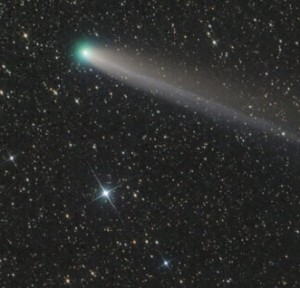 Robert Nemiroff has been invited to speak in New York City at the American Museum of Natural History on Friday, 2014 January 3 at 6:15 pm at the invitation of the Amateur Astronomers Association of New York. Lectures are held in the Kaufmann Theater on Central Park West.
Robert Nemiroff has been invited to speak in New York City at the American Museum of Natural History on Friday, 2014 January 3 at 6:15 pm at the invitation of the Amateur Astronomers Association of New York. Lectures are held in the Kaufmann Theater on Central Park West.
This year he will be primarily presenting and describing the best astronomy videos featured on Astronomy Picture of the Day during the past two years: 2012 and 2013.
Jackson Blended Learning Winners
In early November, the William G. Jackson Center for Teaching and Learning invited faculty to submit proposals to support blended learning course innovations. Proposals were accepted at three levels ($1,000, $5,000 and $10,000), and a total of $50,000 was originally planned to be awarded during this cycle.
In the Department of Physics, Wil Slough received $1,000 for “Development of Blended Learning Materials for Uncertainty Analysis.”
Read more at Tech Today.
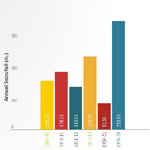 The science behind snow at Tech
The science behind snow at Tech
According to Dr. Cantrell, associate professor of Physics and member of the Atmospheric Sciences interdepartmental PhD program, there are three reasons Tech gets so much snow.
The first reason is that it gets cold.
Read more at the Michigan Tech Lode, by Rand Silvers.
